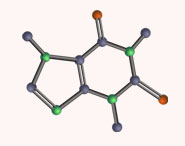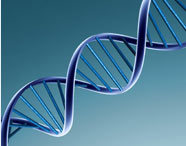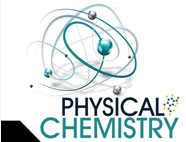


 علم الكيمياء
علم الكيمياء 
 الكيمياء التحليلية
الكيمياء التحليلية 
 الكيمياء الحياتية
الكيمياء الحياتية 
 الكيمياء العضوية
الكيمياء العضوية 
 الكيمياء الفيزيائية
الكيمياء الفيزيائية
 الكيمياء اللاعضوية
الكيمياء اللاعضوية 
 مواضيع اخرى في الكيمياء
مواضيع اخرى في الكيمياء
 الكيمياء الصناعية
الكيمياء الصناعية |
أقرأ أيضاً
التاريخ: 30-5-2017
التاريخ: 18-9-2018
التاريخ: 30-10-2019
التاريخ: 2-10-2018
|
Nucleophilic attack by the hydride ion, H−, is an almost unknown reaction. This species, which is present in the salt sodium hydride, NaH, has such a high charge density that it only ever reacts as a base. The reason is that its fi lled 1s orbital is of an ideal size to interact with the hydrogen atom’s contribution to the σ* orbital of an H–X bond (X can be any atom), but much too small to interact easily with carbon’s more diffuse 2p orbital contribution to the LUMO (π*) of the C=O group.
Nevertheless, adding H− to the carbon atom of a C=O group would be a very useful reaction, as the result would be the formation of an alcohol. This process would involve going down from the aldehyde or ketone oxidation level to the alcohol oxidation level (Chapter 2, p. 32) and would therefore be a reduction. It cannot be done with NaH, but it can be done with some other compounds containing nucleophilic hydrogen atoms.
The most important of these compounds is sodium borohydride, NaBH4. This is a water-soluble salt containing the tetrahedral BH4 − anion, which is isoelectronic with methane but has a negative charge since boron has one less proton in the nucleus than does carbon.
In Chapter 4 we looked at isoelectronic borane BH3 and the cation CH3+. Here we have effectively added a hydride ion to each of them. But beware! Remember (p. 115) there is no lone pair on boron: you must not draw an arrow coming out of this negative charge to form another bond. If you did, you would get a Penta covalent B(V) compound, which would have ten electrons in its outer shell. Such a thing is impossible with a first-row element as there are only four available orbitals (1 × 2s and 3 × 2p). Instead, since all of the electrons (including those represented by the negative charge) are in B–H σ orbitals, it is from a B–H bond that we must start any arrow to indicate reaction of BH4− as a nucleophile. By transferring this pair of electrons, we make the boron atom neutral—it is now trivalent with just six electrons.
What happens when we carry out this reaction using a carbonyl compound as the electro phile? The hydrogen atom, together with the pair of electrons from the B–H bond, will be transferred to the carbon atom of the C=O group. Although no hydride ion, H−, is actually involved in the reaction, the transfer of a hydrogen atom with an attached pair of electrons can be regarded as a ‘hydride transfer’. You will often see it described this way in books. But be careful not to confuse BH4 − with the hydride ion itself. To make it quite clear that it is the hydrogen atom that is forming the new bond to C, this reaction may also be helpfully repre sented with a curly arrow passing through the hydrogen atom.
You met this reaction in Chapter 5 but there is more to say about it. The oxyanion produced in the first step can help stabilize the electron-deficient BH3 molecule by adding to its empty p orbital. Now we have a tetravalent boron anion again, which could transfer a second hydro gen atom (with its pair of electrons) to another molecule of aldehyde.
This process can continue so that, in principle, all four hydrogen atoms could be transferred to molecules of aldehyde. In practice the reaction is rarely as efficient as that, but aldehydes and ketones are usually reduced in good yield to the corresponding alcohol by sodium boro hydride in water or alcoholic solution. The water or alcohol solvent provides the proton needed to form the alcohol from the alkoxide.
Sodium borohydride is one of the weaker hydride donors. The fact that it can be used in water is evidence of this: more powerful hydride donors such as lithium aluminium hydride, LiAlH4, react violently with water. Sodium borohydride reacts with both aldehydes and ketones, although the reaction with ketones is slower: for example, benzaldehyde is reduced about 400 times faster than acetophenone in isopropanol. This is because of steric hindrance (see above). Sodium borohydride does not react at all with less reactive carbonyl compounds such as esters or amides: if a molecule contains both an aldehyde and an ester, only the aldehyde will be reduced.
The next two examples illustrate the reduction of aldehydes and ketones in the presence of other reactive functional groups. No reaction occurs at the nitro group in the fi rst case or at the alkyl halide in the second.



|
|
|
|
حقن الذهب في العين.. تقنية جديدة للحفاظ على البصر ؟!
|
|
|
|
|
|
|
علي بابا تطلق نماذج "Qwen" الجديدة في أحدث اختراق صيني لمجال الذكاء الاصطناعي مفتوح المصدر
|
|
|
|
|
|
|
بالفيديو: نقيب المهندسين العراقيين خلال جولته في مشاريع العتبة الحسينية برفقة رئيس قسم الإعلام: مشهد مفرح يظهر اهتماما كبيرا بالجانبين الإنساني والصحي
|
|
|